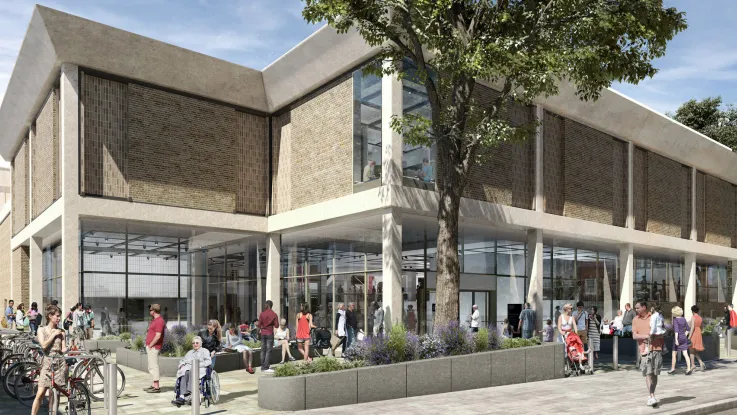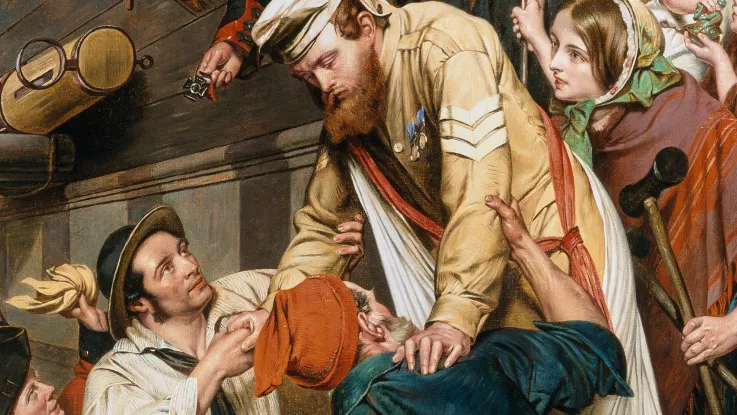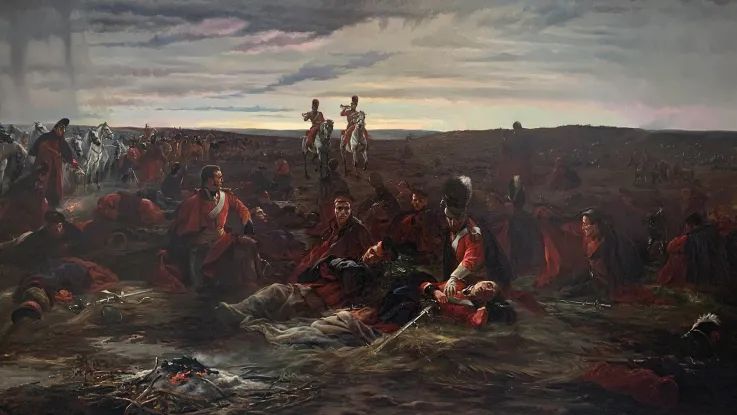Major new display ‘Myth and Reality: Military Art in the Age of Queen Victoria’ opening this summer
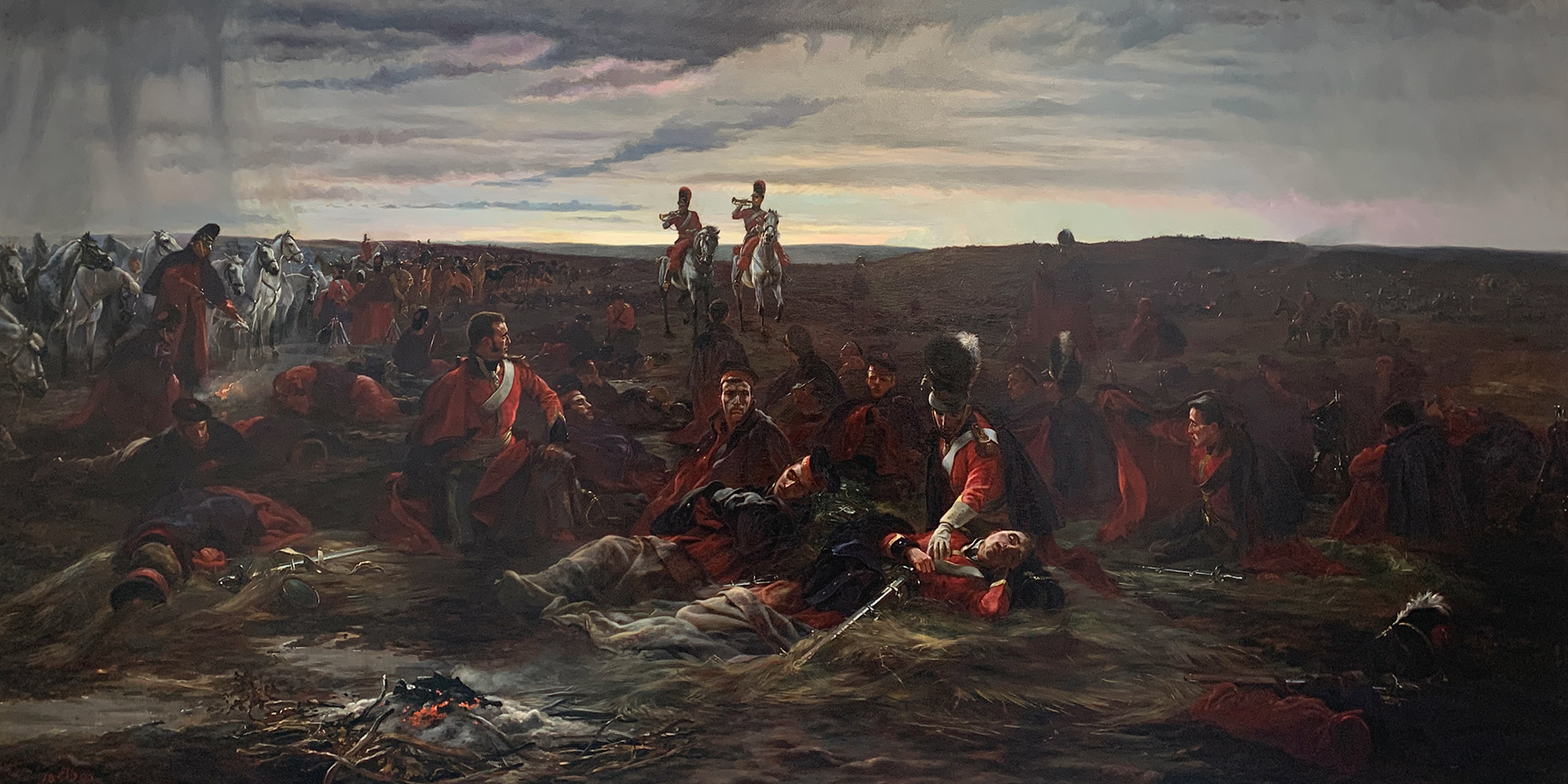
'Dawn of Waterloo', Lady Elizabeth Butler
Wednesday, 28 May 2025
The National Army Museum is delighted to announce a new long-term exhibition featuring over 100 works of art charting the changing attitudes to the military during the 19th century.
- Exhibition dates: Tuesday, 1 July 2025 to Sunday, 1 November 2026
- Press preview: Monday, 30 June 2025
Featuring some of the most celebrated artists of the era, ‘Myth and Reality: Military Art in the Age of Queen Victoria’ is the first dedicated art exhibition at the National Army Museum in over five years. It will showcase the Museum’s extensive art collection to explore the relationship between Victorian military art and the real experiences of soldiers on the front line.
During Queen Victoria’s reign (1837–1901), artists influenced the way British people thought about the Army and its soldiers more than ever before. Throughout the exhibition there are works of art by soldiers documenting their service abroad. War artists and reporters were also eyewitnesses to military campaigns across the world and exhibitions were attended by huge crowds. Reproductions and affordable prints decorated homes across the country, shaping attitudes to the Army’s role in a changing world.
Taking four overarching themes — The Female Perspective, The Great Campaigns, Patriotism and Portraiture, and Realism and Reportage — highlights include the significant collection of 25 works by Elizabeth Thompson, Lady Butler, who rocketed to fame in the 19th century for her depictions of Waterloo and Crimea, as well as significant loans from the Royal Collection and the National Portrait Gallery.
Susan Ward, Head of Art at the National Army Museum, said:
‘This is the first time the National Army Museum has brought together artworks from the Victorian era in their own special display. The exhibition space captures the feel of a 19th-century art salon, and visitors will be immersed into the space as exhibition goers were during Queen Victoria’s reign. These images are not only powerful, but they also shaped how British people thought about the Army and its soldiers for many years to come. Through this exhibition we explore whether they were a true reflection of the reality of service.’
Brigadier (Retired) Justin Maciejewski, DSO MBE, Director of the National Army Museum, said:
‘We are delighted to bring the National Army Museum’s extraordinary military art collection into the spotlight. This exhibition tells the story of a period of history when the Armed Forces were in action across the world, and brings it to life through artworks created on the front line and at home. This was a time when the ordinary soldier’s experiences were highlighted as never before, which had a huge impact on both politicians and the public. The legacy of these artworks is still evident today.’
With a rotating display every six months, ‘Myth and Reality’ will illuminate an era that saw great change in British society, with the art produced during this period influencing and mirroring a shift in the public’s attitudes to soldiers. No longer would Britain’s Army be depicted through its generals and leaders alone. Instead, military painters evoked ordinary soldiers and their experiences.
The exhibition is kindly supported by The Cadogan Charity.

A page from one of Lady Butler's sketch books
The Female Perspective
During the Victorian era, when men dominated the military scene, the most famous British battle artist was a woman: Elizabeth Thompson, Lady Butler. Relying on military correspondence, advice from army companions and going to great lengths to ensure the accuracy of her paintings, including buying uniforms, helmets and weaponry, Butler's work became synonymous with what the Army represented for large swathes of the population.
'The Dawn of Waterloo' (1895), acquired by the National Army Museum in 2021 with the generous support of Art Fund, and ‘The Roll Call’ (1874), lent by His Majesty The King from the Royal Collection, will be shown alongside her sketch books for the first time.
‘The Roll Call’ depicted a line of soldiers worn out by conflict and was shown in 1874 at the Royal Academy Summer Exhibition. Butler later wrote that after the opening of the Summer Exhibition, she awoke to find herself famous. The popularity of her paintings and interest from the public as well as high society reflected Victorian society's obsession with Britain's military past.
Women also took more prominent roles in the military and were celebrated in various roles such as nursing. The exhibition will present a range of depictions of Florence Nightingale. Portraits of ‘the lady with the lamp’ and recreations of her experience in the field offered a new perspective of life of the front line.
The exhibition also considers Queen Victoria’s role as Commander in Chief of the Armed Forces and her notable commissions of paintings. ‘Her Majesty Queen Victoria, inspecting the wounded Guards’ (1856) by Simeon A Beeger demonstrates the active ceremonial role of the Monarch, whilst personal quotes and reports from artists commissioned by Queen Victoria demonstrate her keen interest in committing her Army’s campaigns to canvas.
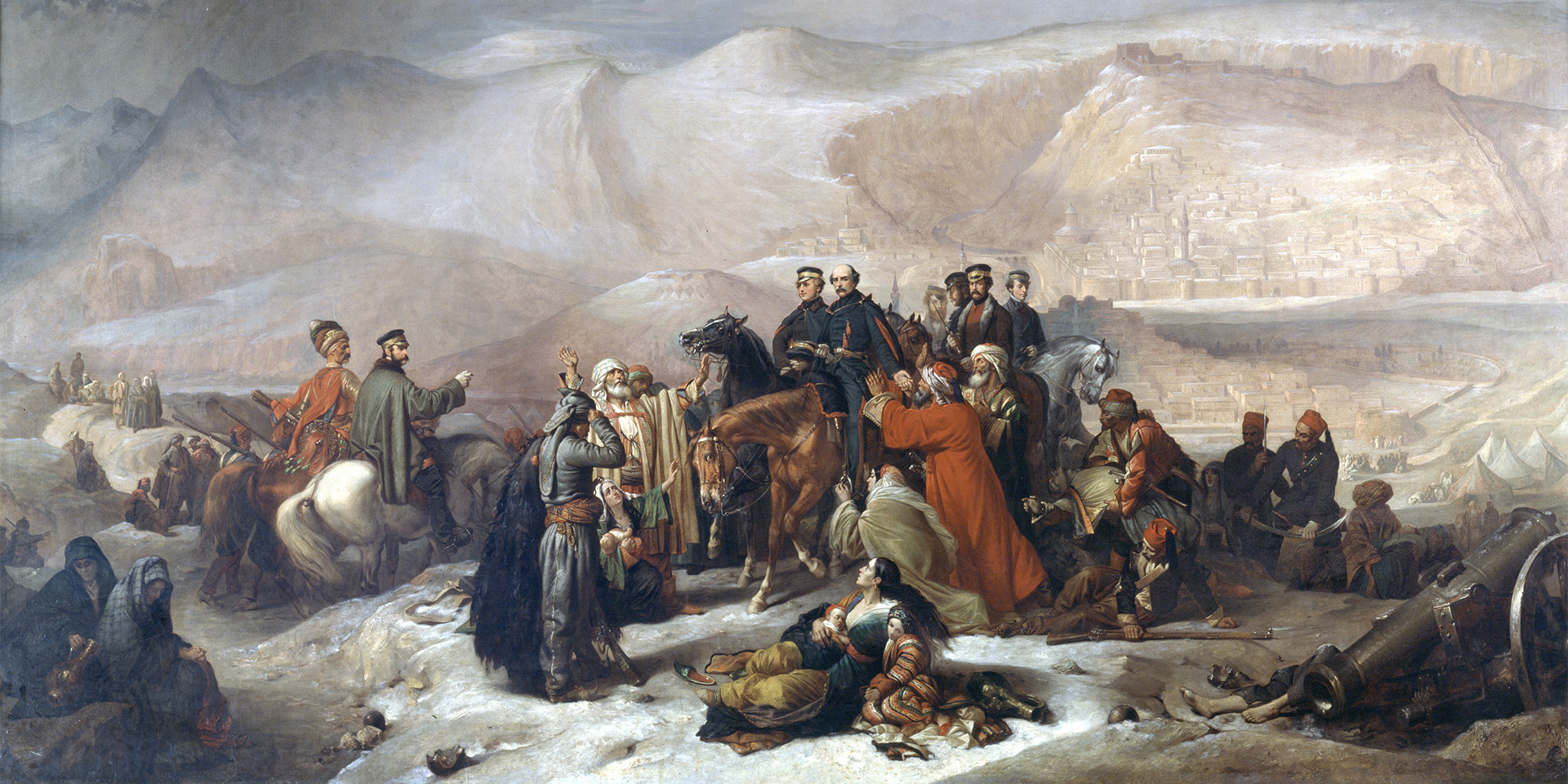
'The Capitulation of Kars', Thomas Barker Jones
The Great Campaigns
During the Victoria era, the British military had a presence across much of the world with the military in active campaigns every year of Queen Victoria’s reign. This was the height of the Empire and soldiers fought in conflicts in Africa, India and beyond. Looking at this broad geographical perspective, the exhibition demonstrates how even when the Army suffered major defeats, Victorian painters helped to shape public opinion in often unexpected ways.
Taking a central role in the display will be ‘The Capitulation of Kars, Crimean War, 28 November 1855’, an oil on canvas by Thomas Barker Jones. Last displayed in 2003, ‘The Capitulation of Kars’ is five metres wide and depicts a dramatic scene when Kars, a city in north-eastern Turkey, was besieged by a Russian army of 25,000 men. This larger-than-life depiction of battle was commissioned by an art dealer specifically to be resold as mass-produced prints. Although the Army suffered a defeat, the wide distribution of this artwork acted as propaganda to encourage pride in serving soldiers.
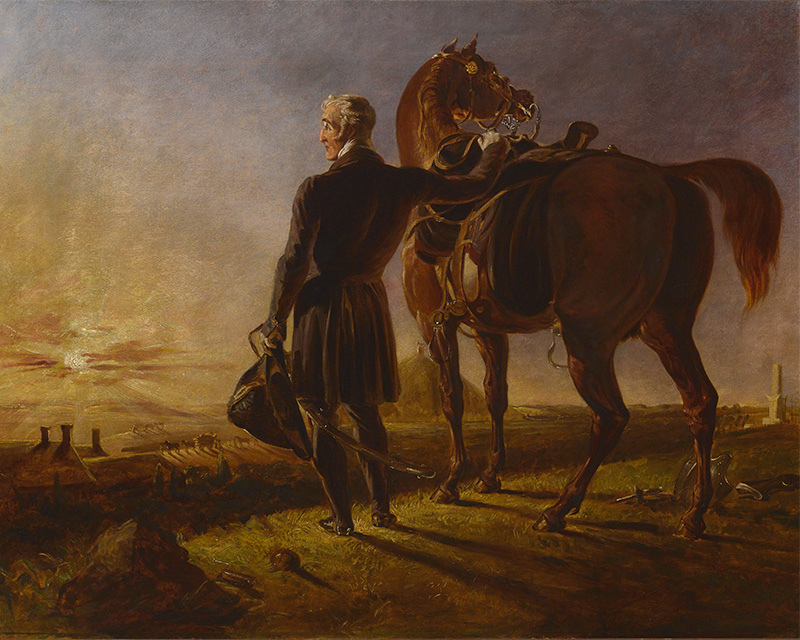
'Field Marshal Sir Arthur Wellesley, Duke of Wellington, as an old man surveying the battlefield of Waterloo', Benjamin Robert Haydon
Patriotism and Portraiture
Art also served to support nostalgia and encourage patriotism by promoting military celebrities. The Duke of Wellington, who defeated Napoleon at the Battle of Waterloo, rose to mythical status in the minds of the public, and continued to dominate military painting throughout the 19th century.
Heroes from battle were also celebrated following the introduction of the Victoria Cross (VC). The VC is the highest military honour awarded for gallantry in the face of the enemy and was established 1856 by Queen Victoria to acknowledge the bravery displayed during the Crimean War.
Portraits of VC winners became a common occurrence, memorialising sacrifice and bravery. VCs on display include those of Field Marshal Frederick Sleigh Roberts, 1st Earl Roberts, and his son Frederick Hugh Sherston Roberts: one of only three father-son pairs to be awarded the VC.
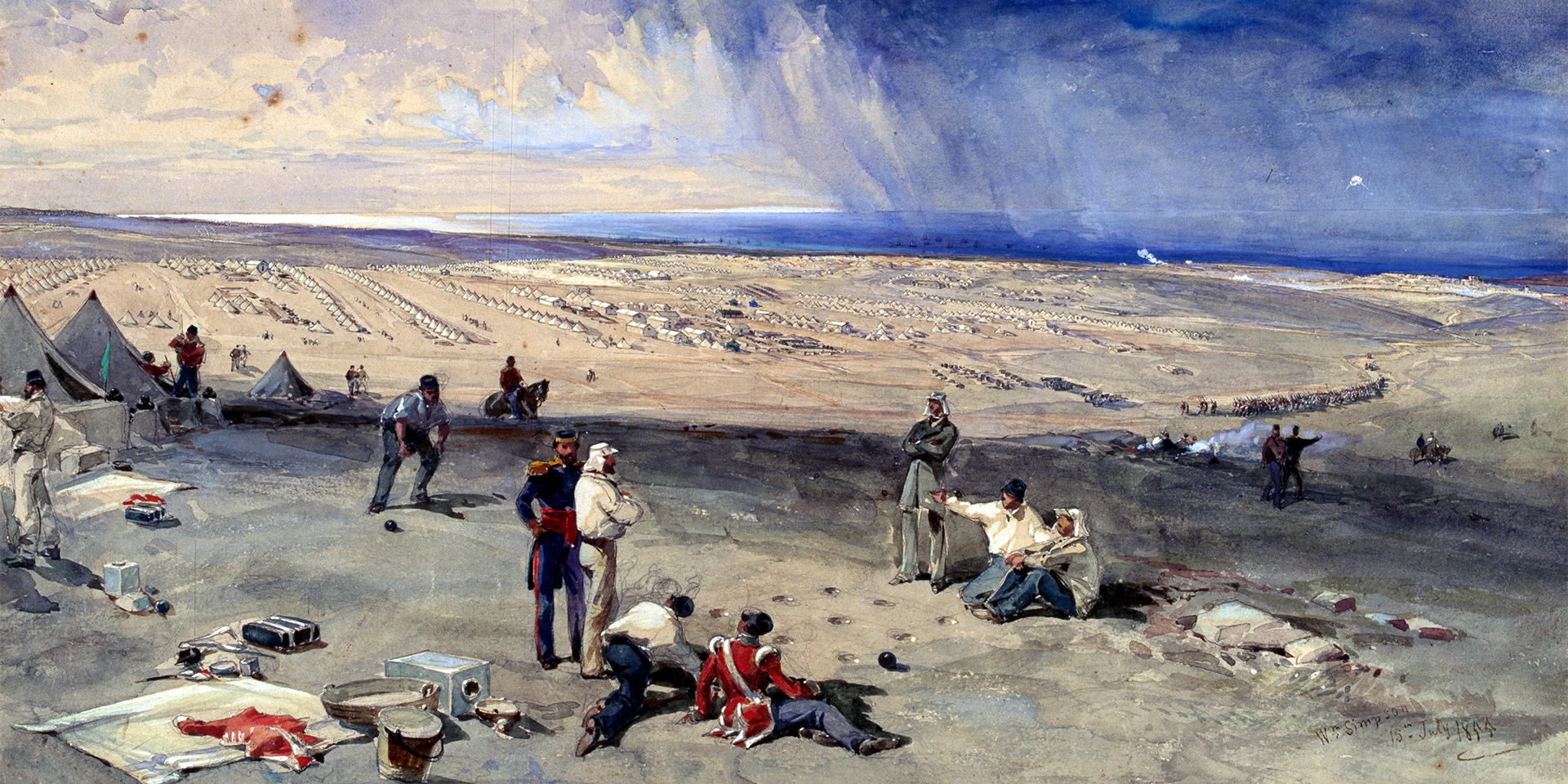
'Camp of the 3rd Division, 15 July 1855', William Simpson
Realism and Reportage
The Victorian era also saw a great change in the reporting of news from the front, with the Crimean War (1854–56) marking a turning point. It was the first war in which the speed of correspondence and imagery sent home to Britain shaped public perceptions while it was being fought. Artists were sent into battle to report on what was happening on the ground with commissions from newspapers.
Artworks on display include watercolours by artist and lithographer, William Simpson, pencil and watercolours by Joseph Arthur Crowe KCMG, journalist at 'The Times', consular official and art historian, and works by other war artists including Edward Matthew Hale, Georges Bertin Scott and Edmund Walker.
These artworks played a crucial role in reshaping the public’s understanding of war and the individuals who fought in it. Some depicted stark, first-hand documentary realism that challenged romanticised notions of military life and influenced later Army reforms. Others blurred the line between art and propaganda - glorifying troops returning from controversial conflicts or uprisings and what we might now call 'fake news'.
Notes to editors
For more information, please contact Sutton:
- Madeleine Mann at Sutton nam@suttoncomms.com
- +44 (0) 7514 097 332
Join in the conversation on:
- X: @NAM_London
Facebook: facebook.com/NationalArmyMuseum
Instagram: @nam_london
About the National Army Museum
The National Army Museum shares the history and heritage of our soldiers and their service in the Army, across the globe and down the centuries. Through our collections we explore the history of the Army from its origins to the present day. We aim to engage and inspire everyone with the stories of our soldiers and how their service shapes our world; past, present and future.
About the Royal Collection Trust
Royal Collection Trust is a charity caring for the Royal Collection and welcoming visitors to the royal palaces. We bring our shared history to life through world-class experiences that involve and inspire people, wherever they are. Income from tickets and retail sales helps us to conserve the Collection so that it can be enjoyed by everyone for generations to come.
About the Royal Collection
The Royal Collection is one of the world’s great art collections, held in trust by The King for his successors and the nation. With over a million objects, from paintings, drawings and books to sculpture, furniture and jewellery, it is a unique record of the tastes of British kings and queens over the past 500 years, with many items still used today for their original purpose. The Collection can be seen in palaces, museums and galleries across the UK and around the world, and can be explored online at www.rct.uk.

